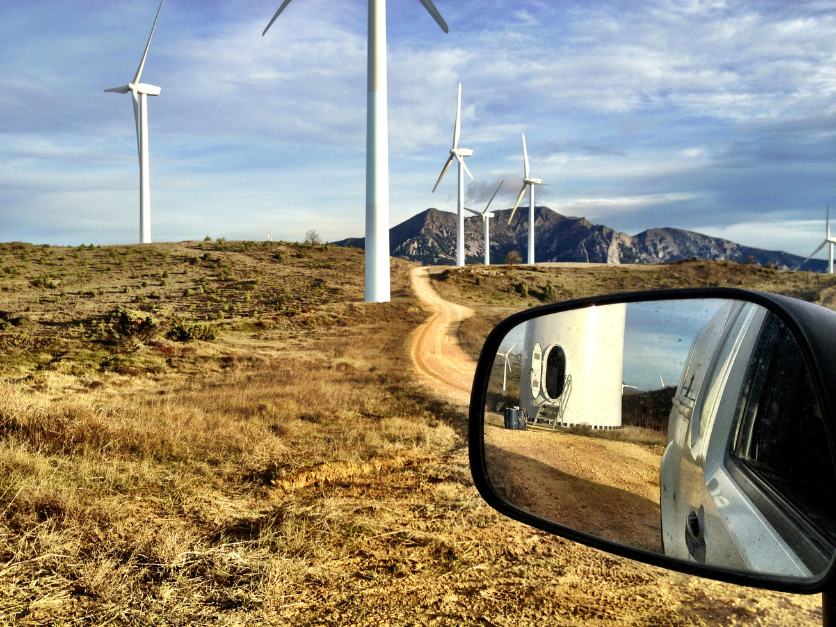The Navarra region in Northern Spain is home to a pioneering initiative aiming at embedding greater circularity across its thriving industries. Known as Navarra Zirkular, the partnership is building a comprehensive one-stop-shop, offering regional businesses support in the transition journey towards circular economy, in terms of visibility, workshops, trainings and access to collaboration between partners.
We spoke to Montse Guerrero, Delia Sola and Legarda Campos from Navarra Zirkular to understand how industrial symbiosis is helping reshape the region’s industrial landscape.
Q: What is the industrial context in your region, and how does industrial symbiosis come into play?
Navarra is a highly industrialised region, with industry contributing more than 30% of the region’s GDP, which is higher than Spain’s national average. We have a mix of small businesses and big companies in key sectors such as automotive, agri-food and renewable energy (including wind turbines and photovoltaic panel production).
In this context, industrial symbiosis takes place as part of our wider circular economy activities, as we do not have yet a dedicated programme for it. One example is companies exchanging water and heat, with provision of water and infrastructures being centralised and managed by the public authorities. The agri-food sector is also quite active in revalorising resources, such as transforming olive oil production waste into other products, or the chemical extraction of components of food processing by-products that are transformed into new food and feed advanced ingredients.
Q: What role does Navarra Zirkular play in this landscape?
Navarra Zirkular is a public-private partnership led by the government’s industry and environment departments. We act as a one-stop-shop for businesses interested in circular economy, which often intersects with industrial symbiosis.
Our first step to engage with a company is to offer support to evaluate their circularity and identify opportunities to improve and collaborate in innovative projects. This includes mapping their business model, processing, product manufacturing, and by-products or waste that could be used by other companies. In some cases, we involve research institutions, technological centres and start-ups to explore ways to add value to these materials. We also encourage research and innovation projects, funding calls and territorial plans that include industrial symbiosis.
Q: How do you engage and dialogue with businesses?
Our position as industry department means that companies do not see us as inspectors, but supporters and facilitators. We help them develop projects, improve investments, and provide substantial funding, which means we are in regular contact for grant applications and tax reports on their research, development and innovation activities. This information in turn allows us to identify opportunities for industrial symbiosis, for instance, more easily.
Q: In your diverse policy toolbox, is there any tool that stands out as particularly effective?
We ask ourselves the same question every day. We do not think that there is one single solution: all tools are needed and useful. Each value chain, its waste and by-products need tailored support, infrastructure, and ways of looking for circular solutions to engaging stakeholders. Industrial symbiosis is an intersectoral activity, so you need several complementary measures to achieve the same objective.
Q: What are the main challenges to advancing industrial symbiosis in Navarra?
One significant challenge is “end-of-waste” regulations, which define what type of waste can be legally classified as by-product for specific sectors and exchanges. This has recently changed in Spain: now it’s no longer a national competence, but delegated to each regional authority, which will make things easier.
Another issue is the lack of knowledge from companies about what materials are available from or could be used by other companies. Or if the opportunity is there, there’s no shared infrastructure to process or handle the materials. Our new regional industrial law should aim to support development of such system to address these gaps.
Finally, we seem to lack a common approach to industrial symbiosis at the EU level. At the moment, local contexts and regulations are very different, making it harder to apply the lessons learned from European projects. We hope the proposed Circular Economy Act will help address this.
Q: What advice would you give to other regions going through the same journey?
The first step is to understand what resources you have, who the stakeholders are, which opportunities are there for industrial symbiosis, and importantly, what barriers there might be, because they vary across regions and countries.
From there, start working with what you have, and seek support from the regional ecosystem with the support of the regional government. Another important thing is to encourage technical staff to increase their knowledge – with knowledge about different materials, by-product sand their potential – to facilitate the relationships between companies to create and manage contacts. This is something we have started doing recently and we see that it is very helpful. Clusters and territorial and development agencies support, and collaboration is essential.
Are you interested in learning more about industrial-urban symbiosis and joining a community of like-minded professionals? We invite you to join the Hubs4Circularity Community of Practice, a free platform to share knowledge, tools and opportunities to progress together towards industrial and industrial-urban symbiosis and circular value chains. Sign up at www.h4c-community.eu.


